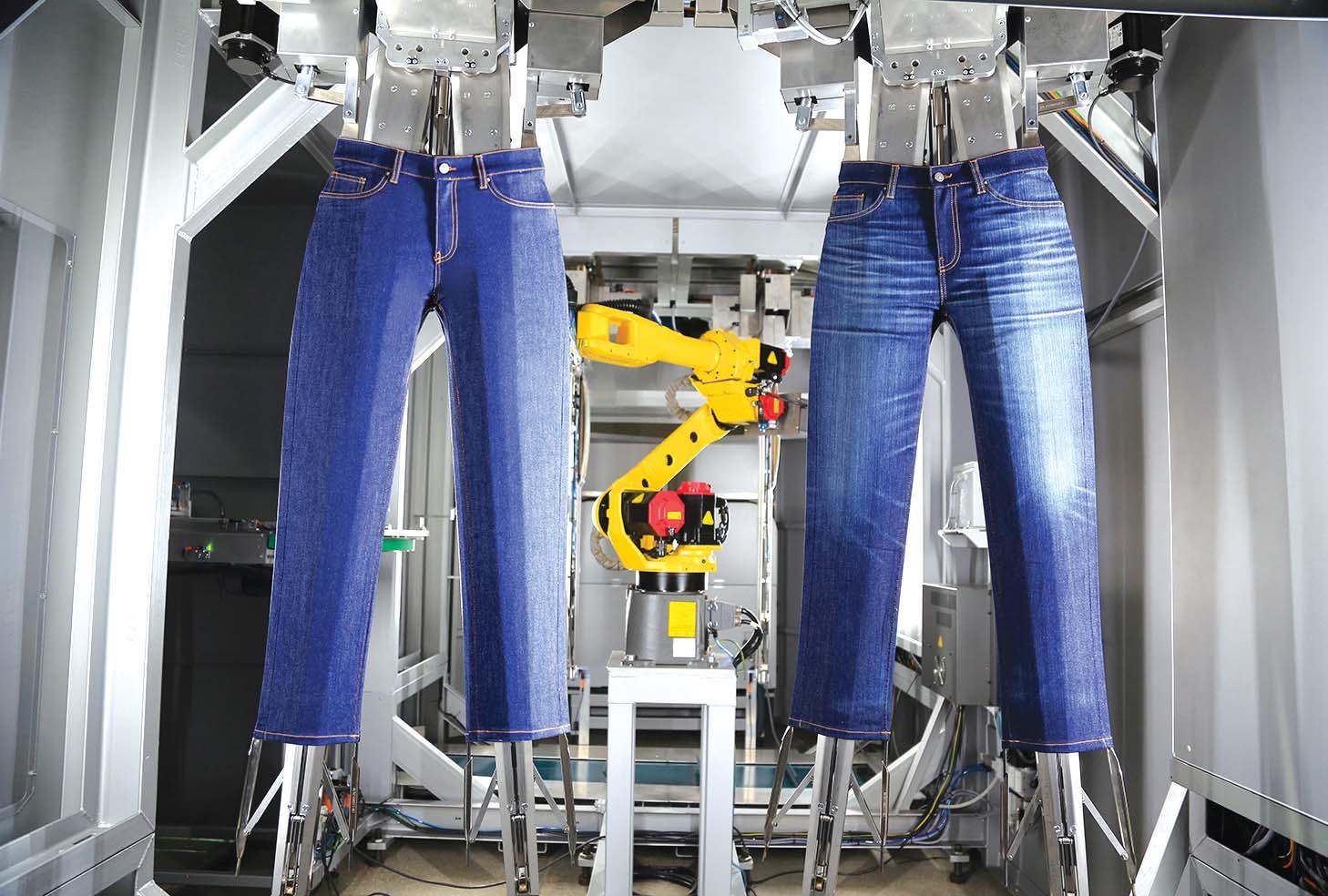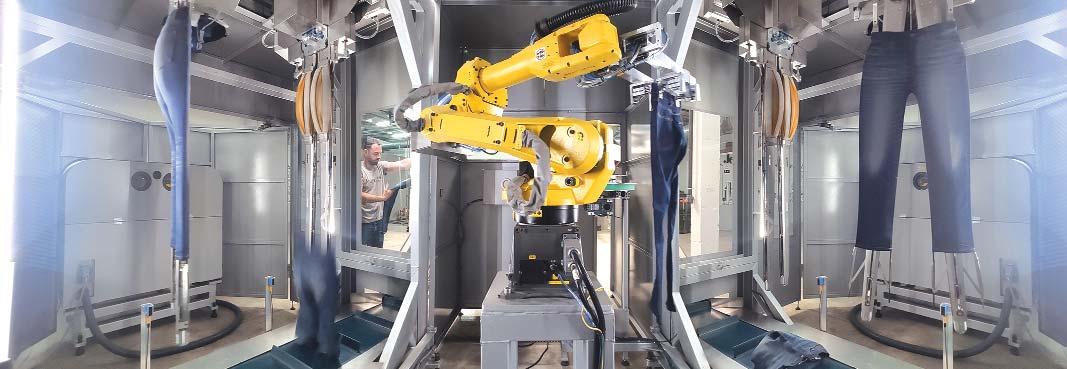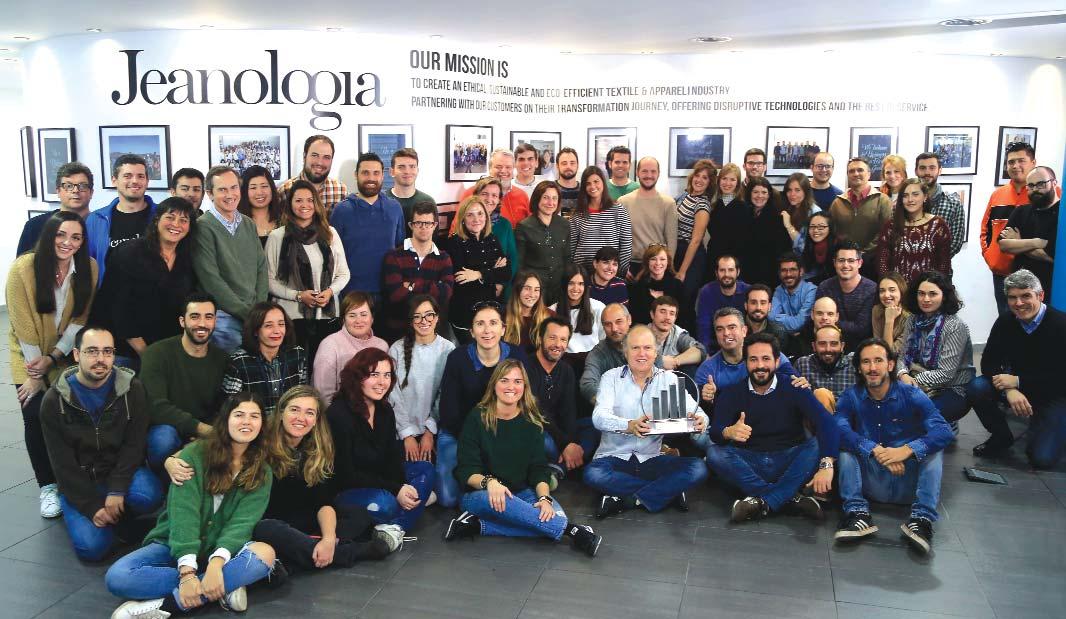
3 minute read
Jeanologia launches Handman, the future of textile manufacturing
On the Earth Day presents a new technology that takes the industry to the next level using automation
With this milestone, the company
Advertisement
makes sustainable production scalable
Two people with two robots and
eight lasers are able to produce 10,000 pairs of jeans a day sustainabl
Handman changes the relationship
between brands, retailers and producers allowing them to be more strategic and interconnected
On the Earth Day, Jeanologia, world leaders in sustainable and ecoefficient technology development, launches Handman a new technology that revolutionizes the jeans industry allowing it to reach the next level thanks to automation.
With Handman, the company achieves a new milestone by making sustainable production scalable. This technology is the beginning of a new era with a completely automized, sustainable and digital production. 10 years ago, introducing its technology, Jeanologia started the biggest transformation that the Blue Jean industry had ever seen. But this was only the beginning. The industry still has deficiencies and continues to use archaic and polluting production methods.
Only with automation is it possible to have clean and scalable manufacturing. Jeanologia has taken its inspiration from other industries that have been adapting to new times and technology innovations. For example, in the telecoms and the automotive sectors people and robots are already working together.
As Enrique Silla, CEO at Jeanologia, highlights “today we present the future of our industry where robots and humans work together, this is the only way to achieve clean and totally scalable production, with reduced costs, greater agility and better production look.”
The way in which we produce a product becomes part of its DNA, which is why, if it is not produced in a sustainable way, it is impossible for the jean industry to be clean, “now is the moment to make this a reality and to do it in a radical and fast way, the future starts today” states Silla.
Handman: 10,000 jeans a day produced sustainably
Jeanologia has led the change of how jeans are designed and produced, through a combination of its technologies it has transformed the production model. Now, with Handman, there is a total revolution of the process.

The technology is equipped by two lasers and a robot cabinet. A human and a robot work together to produce with scalability, agility, sustainability, and efficiency. Two humans working with two robots can produce 10,000 vintage jeans in 24 hours without discharge. Handman is a reality and currently is in use in 3 plants around the world, producing 5 million jeans a year.
Handman also changes the relationship between brands, retailers and producers, allowing them to be more strategic and interconnected. Brands communicate directly with Handman and their production centers, and designers send instructions directly to the production centers. “Moving from traditional transactions to more strategic and interconnected ones. For the first time, consumers and production centers will be connected, brands will become creative platforms that allow connection between consumer and producer” concludes Silla.
More than 25 years working for the world
Since 1994 Jeanologia’s mission has been to create an ethical, sustainable, and eco-efficient industry through their disruptive technology and know-how. Their laser, G2 ozone, e-flow, Smart Boxes and H2Zero, have revolutionized the textile industry. They offer infinite design and garment finishing possibilities, while saving water, energy, and chemicals, eliminating discharge and toxic emissions.
The company currently employs 257 Jeanologist from 27 nationalities and has clients in 5 continents through its 10 subsidiaries. The export of its machines and services represents 90% of its total billing, reaching 68 countries. Over 35% of the 5 billion of jeans produced worldwide every year are made with their technologies, and the biggest market brands place their trust in Jeanologia, using technology developed by the company.











